Categories
TOP RATED PRODUCTS
-
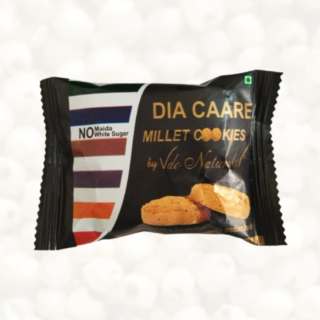 DIA CAARE MILLET COOKIES
DIA CAARE MILLET COOKIES
₹22.00Original price was: ₹22.00.₹15.00Current price is: ₹15.00. -
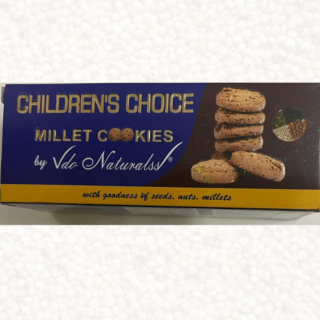 Childrens Choice Millet Cookies - 70gm
Childrens Choice Millet Cookies - 70gm
₹70.00Original price was: ₹70.00.₹53.00Current price is: ₹53.00. -
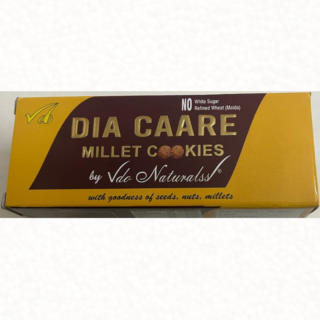 Dia Caare Millet Cookies 70gm
Dia Caare Millet Cookies 70gm
₹70.00Original price was: ₹70.00.₹53.00Current price is: ₹53.00. -
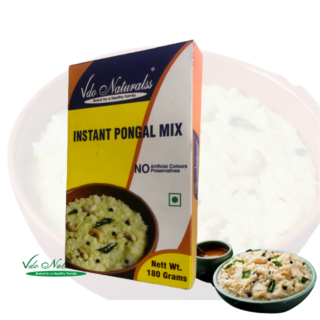 Instant Rice Pongal Mix 180gm
₹65.00
Instant Rice Pongal Mix 180gm
₹65.00
-
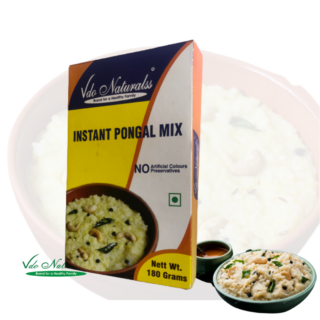 Instant Little Pongal Mix
Instant Little Pongal Mix
₹98.00Original price was: ₹98.00.₹73.00Current price is: ₹73.00.
CLIENT'S TESTOMONIAL

Varadharajan
Finest quality and wide range of cold pressed oils. Legacy and natural shop. Best place for buying any oil be that cold pressed coconut , groundnut oil. If you compare the oils available with other branded oils in the market, these are economical and of good quality. The groundnut oil sold by the store is one of the best.
Sandeep
Professional and timely handling of orders. Good customer support. Quality of products is good. Am a repeat customer now! Surprised to see negative reviews of customer support. It is after seven months after the above review: I would 100% recommend. It happened so that during my recent order on receipt I found the packaging was open and two 1 ltr coconut oil were missing, it could be during transit. Was stunned with their response and action. Amazing levels of keeping customer happy. Keep up the levels please!
Blog2
11. History of Millets in Indian Context Part-1
In the annals of history, millets stand as silent witnesses to the evolution of ancient civilizations, particularly in the context of India. These tiny grains, often overshadowed by their larger counterparts, have played a pivotal role in shaping the culinary and agricultural landscape of the Indian subcontinent.
Historical Roots of Millets in Ancient India:
1.Millets in Vedic Literature:
Millets find mention in the ancient Vedic texts, highlighting their presence in the diet and agricultural practices of early Indian communities. Rigveda, one of the oldest sacred texts, references millets as a staple food, underscoring their importance in sustaining life.
2.Millets in Ayurveda:
Ayurveda, the ancient Indian system of medicine, extols the health benefits of millets. It recognizes their nutritional value and digestive properties, advocating for their inclusion in a balanced diet. Millets were considered suitable for all body types, aligning with Ayurvedic principles.
Cultural Significance of Millets:
1.Religious Rituals and Offerings:
Millets held a sacred place in religious rituals and offerings. Various festivals and ceremonies in ancient India featured millet-based dishes, symbolizing fertility, prosperity, and a connection to the earth.
Traditional Culinary Practices:
Millets were an integral part of traditional Indian cuisine. Dishes like “Bajra Roti” and “Jowar Bhakri” were staples in different regions, reflecting the diverse culinary practices that embraced millets as a primary source of sustenance.
Agricultural Practices and Millet Varieties:
Diversity of Millet Cultivation:
Ancient Indian agriculture thrived on the cultivation of diverse millet varieties. From Foxtail Millet (Kakum), Pearl Millet (Bajra), to Finger Millet (Ragi), each variety adapted to different climatic conditions and soil types.
Sustainable Farming Practices:
Millets were well-suited to the Indian subcontinent’s varied agro-climatic zones, requiring minimal water and exhibiting resilience to pests. This contributed to sustainable farming practices, aligning with the ecological ethos of ancient India.
12. History of Millets in Indian Context Part-2
Nutritional Benefits of Millets:
Rich Source of Nutrients:
Millets are a powerhouse of essential nutrients, including fiber, protein, vitamins, and minerals. Their consumption contributed to the overall health and well-being of ancient Indians, serving as a reliable source of sustenance.
Dietary Diversity and Health Impact:
The inclusion of millets in the diet provided dietary diversity, ensuring a broad spectrum of nutrients. This dietary diversity, in turn, had a positive impact on health, preventing nutritional deficiencies and promoting overall well-being.
Decline and Revival of Millets:
1.Shift in Dietary Patterns:
With the advent of modern agricultural practices and the Green Revolution, there was a gradual shift away from traditional millet-based diets towards rice and wheat. This shift had implications for both agricultural biodiversity and the health of the population.
2.Contemporary Revival Efforts:
Recognizing the nutritional and ecological benefits of millets, there has been a contemporary revival of interest in these ancient grains. Government initiatives, non-profit organizations, and farmers are working collaboratively to reintroduce millets into mainstream agriculture and diets.
The story of millets in ancient India is one of resilience, sustainability, and nutritional richness. As we navigate the complexities of modern agriculture and dietary choices, revisiting the wisdom of our ancestors and embracing the diversity of millets may offer a path towards a healthier, more sustainable future.
The journey of millets in ancient India serves as a valuable lesson, urging us to rediscover and appreciate the hidden treasures in our culinary and agricultural heritage.
13. Unveiling the Wellness Wonders: Benefits of Cold-Pressed Coconut Oil
In the area of natural oils, few can rival the versatility and health-promoting properties of cold-pressed coconut oil. Extracted through a meticulous process that preserves the oil’s nutritional integrity, cold-pressed coconut oil has gained immense popularity in recent years.
The Cold-Pressing Process:
Preserving Nutritional Prowess:
Cold-pressing involves extracting coconut oil without the use of heat or chemicals. This gentle process ensures that the oil retains its natural goodness, including medium-chain fatty acids (MCFAs) and a rich array of vitamins and minerals.
Pure and Unadulterated:
Cold-pressed coconut oil is synonymous with purity. The absence of heat in the extraction process prevents nutrient degradation and maintains the oil’s natural aroma, flavor, and color.
Nutritional Powerhouse:
Medium-Chain Fatty Acids (MCFAs):
Cold-pressed coconut oil is a rich source of MCFAs, particularly lauric acid. These fatty acids are easily digestible and swiftly metabolized, providing a quick and sustained energy source.
Antioxidant Properties:
Packed with antioxidants, cold-pressed coconut oil helps combat oxidative stress, reducing the risk of chronic diseases and supporting overall cellular health.
Health Benefits:
Heart Health:
The unique fatty acid profile of cold-pressed coconut oil, including lauric acid and caprylic acid, has been linked to improving heart health by promoting healthy cholesterol levels and supporting cardiovascular function.
Boosting Immunity:
Lauric acid in coconut oil possesses antimicrobial and antiviral properties, contributing to a robust immune system. Regular consumption may help the body ward off infections and illnesses.
Beauty and Skincare:
Moisturizing and Nourishing:
Cold-pressed coconut oil is a natural emollient, making it an excellent moisturizer for skin and hair. Its ability to penetrate the skin’s layers helps lock in moisture and promote a healthy, radiant complexion.
Anti-Aging Properties:
The antioxidants in coconut oil helps to reduce the signs of aging. Regular application can diminish wrinkles, fine lines, and age spots, leaving the skin looking youthful and rejuvenated.
Oral Health:
Oil Pulling Benefits:
Incorporating cold-pressed coconut oil into the practice of oil pulling can enhance oral health. The oil’s antimicrobial properties help combat harmful bacteria, reducing the risk of cavities, gum disease, and bad breath.
Natural Teeth Whitener:
Coconut oil’s mild abrasive nature, combined with its antibacterial properties, makes it an effective and natural teeth whitener. Regular oil pulling or toothpaste formulation can contribute to a brighter smile.
Cooking and Culinary Uses:
High Smoke Point:
Cold-pressed coconut oil has a high smoke point, making it ideal for various cooking methods, including sautéing, baking, and frying. Its stability at high temperatures preserves the nutritional quality of the oil.
Enhancing Flavor:
The distinctive tropical flavor of cold-pressed coconut oil adds a delightful touch to both sweet and savory dishes. Its versatility in the kitchen makes it a favorite among chefs and home cooks alike.
The benefits of cold-pressed coconut oil extend far beyond mere culinary indulgence.
14. Exploring the Diversity between Millets and Other Grains
In the vast landscape of grains, millets stand out as nutritional powerhouses, often overlooked in comparison to more common staples.
Millets: Ancient Grains with Modern Appeal
Historical Significance:
Millets, including varieties like foxtail millet, pearl millet, and finger millet, have been cultivated for thousands of years. Tracing their roots to ancient civilizations, these grains played a pivotal role in sustaining communities and are woven into the cultural fabric of many regions.
Nutritional Content:
Millets boast an impressive nutritional profile, rich in fiber, vitamins, and minerals. With their gluten-free nature, they cater to diverse dietary needs and contribute to a well-balanced, nutrient-dense diet.
Common Grains: A Comparative Overview
Wheat:
As a staple in many diets worldwide, wheat is renowned for its gluten content, making it a primary ingredient in bread and pasta. However, for those seeking gluten alternatives or with gluten sensitivity, millets emerge as a viable and nutritious option.
Rice:
Rice, another global staple, is a versatile grain with various varieties. While rice remains a dietary staple, the nutritional diversity of millets offers a compelling reason to incorporate them into the diet for enhanced health benefits.
Culinary Applications: Millets vs Other Grains
Versatility in the Kitchen:
Millets can be incorporated into a myriad of dishes, from porridges and pilafs to flatbreads and desserts. This versatility rivals that of traditional grains, offering exciting alternatives for those seeking variety in their meals.
Gluten-Free Alternatives:
For individuals with gluten sensitivity or celiac disease, millets provide an excellent gluten-free alternative. They open up a world of culinary possibilities, allowing those with dietary restrictions to enjoy a diverse range of delicious and nutritious meals.
Environmental Sustainability
Water and Resource Efficiency:
Millets are inherently more sustainable than certain traditional grains. They often require less water and fewer resources for cultivation, making them environmentally friendly and well-suited to regions facing water scarcity.
Adaptability to Harsh Conditions:
Millets exhibit resilience in diverse climates and soil conditions, contributing to agricultural sustainability. Their adaptability makes them a crucial component of sustainable farming practices worldwide.
Health Benefits: Millets and Beyond
Heart Health:
The high fiber content in millets, along with certain other grains, contributes to heart health by promoting healthy cholesterol levels and supporting cardiovascular well-being.
Blood Sugar Management:
Millets, with their lower glycemic index compared to some traditional grains, may aid in better blood sugar management. This makes them an attractive option for individuals with diabetes or those looking to maintain stable blood sugar levels.
The Future of Grains: Embracing Diversity
Diversifying Diets for Global Health:
As the world grapples with health challenges and the need for sustainable food systems, the diversity offered by millets and other grains becomes increasingly relevant. Embracing a diverse range of grains can contribute to both personal well-being and the health of the planet.
The exploration of millets alongside other grains highlights not only their nutritional prowess but also their potential to reshape the way we approach food. From fostering environmental sustainability to providing diverse culinary experiences, millets stand as emblematic of a future where embracing the richness of our food heritage contributes to both personal and planetary well-being.
15. Millets in Contemporary India: Rediscovering Ancient Grains for Modern Wellness
In the dynamic landscape of contemporary India, there is a resurgent interest in traditional and nutrient-rich foods, and millets are emerging as stars in this culinary renaissance. This comprehensive research post explores the revival of millets in the context of modern India, shedding light on their nutritional benefits, ecological impact, and the role they play in shaping the health and wellness narrative.
The Millet Resurgence:
Millets, often considered ‘forgotten grains,’ are experiencing a revival in contemporary Indian kitchens. From health-conscious millennials to traditionalists seeking sustainable alternatives, millets are finding their way onto dinner tables across the country.
Health and Wellness Trends:
As the pursuit of health and wellness takes center stage, millets are gaining popularity for their rich nutritional content. Their high fiber, protein, and micronutrient profile align with the modern emphasis on nutrient-dense, whole foods.
Nutritional Benefits of Millets:
Dietary Diversity:
Millets contribute to dietary diversity, offering a range of nutrients that go beyond what is commonly found in refined grains. This diversity is crucial for meeting nutritional needs and promoting overall well-being.
Managing Lifestyle Diseases:
The low glycemic index of millets makes them an attractive option for managing lifestyle diseases like diabetes. Their slow digestion and gradual release of glucose into the bloodstream contribute to better blood sugar control.
Sustainable Agriculture Practices:
Water Conservation:
In a country grappling with water scarcity issues, millets demonstrate their resilience by requiring significantly less water compared to water-intensive crops like rice. The shift towards millet cultivation supports water conservation efforts in agriculture.
Biodiversity and Crop Rotation:
Millet cultivation promotes biodiversity and crop rotation, reducing the risk of soil degradation and pests. This aligns with sustainable agricultural practices, contributing to the long-term health of the soil and the ecosystem.
Government Initiatives and Millet Promotion:
National Mission on Nutri-Cereals:
Recognizing the nutritional and ecological benefits of millets, the Indian government has launched initiatives like the National Mission on Nutri-Cereals. These programs aim to increase millet cultivation, raising awareness about their importance in the context of food security and health.
Millets in Public Distribution Systems:
Some states in India have introduced millets into the public distribution systems, making them more accessible to a broader population. This strategic move not only supports local farmers but also encourages widespread adoption.
Culinary Innovation and Millets:
Millets in Modern Recipes:
Chefs and home cooks alike are experimenting with millets, incorporating them into modern recipes. From millet-based pizzas to desserts, these grains are proving their versatility in diverse culinary creations.
Millets in Snack and Beverage Industry:
The snack and beverage industry in India is witnessing a surge in millet-based products. Snack bars, cookies, and even millet-based beverages are gaining popularity as healthier alternatives, catering to the growing demand for nutritious snacks.
Awareness and Acceptance:
Despite the positive momentum, challenges exist in terms of creating widespread awareness and acceptance of millets. Educational campaigns and culinary events are essential to showcase the versatility and benefits of these grains.
Supply Chain Enhancement:
Strengthening the millet supply chain, from production to distribution, is crucial for ensuring a consistent and reliable availability of these grains. This involves support for farmers, efficient processing units, and improved logistics.
The resurgence of millets in contemporary India marks a paradigm shift in the way society views and consumes food.
From the health-conscious urbanite to the farmer in rural landscapes, millets are becoming a symbol of sustainable, nutritious, and culturally rich dietary choices. As millets continue to weave themselves into the fabric of modern Indian cuisine.
16. The Nexus Between Millets and Food Security
In the context of global food security, millets emerge as unsung heroes, offering a sustainable and nutritious solution to the challenges faced by agriculture and nutrition. This comprehensive research post delves into the critical role that millets play in enhancing food security, highlighting their nutritional benefits, ecological resilience, and potential to transform the landscape of global agriculture.
Nutrient-Rich Powerhouses:
Millets, encompassing diverse varieties like foxtail millet, pearl millet, and finger millet, are nutritionally dense grains. Packed with essential nutrients such as fiber, protein, and micronutrients, they address nutritional deficiencies and contribute to overall well-being.
Culinary Versatility:
Millets offer culinary diversity, catering to various dietary preferences and needs. From porridges to flatbreads, their adaptability in the kitchen makes them an ideal candidate for widespread consumption.
Millets and Sustainable Agriculture:
Water-Efficient Crops:
In a world grappling with water scarcity, millets present a sustainable alternative. They are inherently water-efficient crops, requiring significantly less water compared to traditional staples like rice and wheat.
Biodiversity and Ecosystem Health:
Millet cultivation supports biodiversity and ecosystem health. These crops are well-suited for agroecological practices, promoting natural pest control and reducing the reliance on chemical inputs.
Climate Resilience and Millet Cultivation:
Adaptability to Varied Climates:
Millets exhibit a remarkable capacity to thrive in diverse climatic conditions. Their adaptability makes them resilient to the impacts of climate change, providing a stable food source even in challenging environments.
Reducing Environmental Footprint:
The cultivation of millets typically involves fewer greenhouse gas emissions and requires less synthetic fertilizers. As a result, millets contribute to reducing the environmental footprint of agriculture, aligning with sustainable farming practices.
Millets in Alleviating Hunger and Malnutrition:
Affordable and Accessible:
Millets are often more affordable than certain traditional grains, making them accessible to a broader socio-economic spectrum. This affordability is crucial in ensuring that nutrient-rich foods are available to those most vulnerable to food insecurity.
Addressing Hidden Hunger:
Hidden hunger, characterized by micronutrient deficiencies, is a persistent challenge in many communities. Millets, with their rich array of vitamins and minerals, play a pivotal role in addressing hidden hunger and promoting nutritional security.
Government Initiatives and Millet Promotion:
National and International Policies:
Governments globally are recognizing the potential of millets in achieving food security goals. National policies and international collaborations are being established to promote millet cultivation, incentivize farmers, and integrate millets into public distribution systems.
Research and Development Programs:
Investments in research and development programs focused on millets are underway, aiming to enhance crop yields, improve processing techniques, and develop resilient varieties. These efforts contribute to the scalability and mainstreaming of millets in global agriculture.
Challenges and Future Directions:
Market Demand and Consumer Awareness:
Despite the numerous advantages, creating market demand and increasing consumer awareness remain challenges. Educational campaigns and culinary initiatives are essential to showcase the benefits of millets and foster a positive perception among consumers.
Infrastructure and Supply Chain Enhancement:
Strengthening the millet supply chain, including storage, transportation, and processing facilities, is critical for ensuring a reliable and efficient distribution system. Infrastructure enhancement supports both farmers and consumers in adopting millets as a staple.
The integration of millets into global agriculture holds immense promise for addressing the complex issues of food security, sustainable agriculture, and nutritional well-being.
17. The Millet Pioneers in the Indian Perspective: Champions of Nutritional Resurgence
In the rich history of Indian agriculture and nutrition, a silent revolution is underway, led by millet pioneers. These individuals and communities are at the forefront of resurrecting ancient grains like millets, sparking a nutritional resurgence in the country.
The Rise of Millet Pioneers:
Community-Led Initiatives:
Millet pioneers are often grassroots leaders who champion the cause of sustainable agriculture and nutrition at the community level. Their initiatives range from promoting millet cultivation to creating awareness about the health benefits of these grains.
Farmers’ Innovation:
Many millet pioneers are farmers themselves, experimenting with innovative farming techniques to enhance millet yields and adapt to changing climatic conditions. Their experiences offer valuable insights for sustainable and climate-resilient agriculture.
Community-Based Millet Cultivation:
Promotion of Indigenous Varieties:
Millet pioneers emphasize the cultivation of indigenous millet varieties, preserving biodiversity and promoting resilience to pests and diseases. This approach aligns with the principles of agro-ecology and sustainable farming.
Reviving Traditional Practices:
Millet pioneers often revive traditional farming practices that were conducive to millet cultivation. These practices, rooted in local wisdom, contribute to the restoration of agro ecological balance and support soil health.
Millets in the Kitchen: Culinary Innovators
Chef Advocates:
Culinary experts and chefs are also playing a crucial role in the millet revolution. They experiment with millets in diverse recipes, showcasing their versatility and reintroducing these grains into mainstream cuisine.
Culinary Workshops and Events:
Millet pioneers organize culinary workshops and events to educate the public about the culinary potential of millets. These efforts contribute to changing perceptions and fostering a renewed interest in incorporating millets into everyday meals.
Social Entrepreneurs and Millet-Based Products:
Millet-Based Product Innovators:
Social entrepreneurs are venturing into the creation of millet-based products, from snacks and beverages to flours and ready-to-cook mixes. Their innovations contribute to making millets more convenient and accessible for a wider audience.
Market Linkages and Sustainability:
Millet pioneers engaged in entrepreneurship often focus on creating sustainable market linkages. This not only provides farmers with a fair income but also ensures a steady supply of millet-based products to meet the growing demand.
Millet Pioneers and Policy Advocacy:
Policy Influencers:
Millet pioneers engage in advocacy at the policy level, pushing for the inclusion of millets in government programs and policies. Their efforts contribute to creating an enabling environment for millet cultivation and consumption.
Partnerships with Research Institutions:
Collaborations between millet pioneers and research institutions foster innovation and the development of improved millet varieties. These partnerships contribute to enhancing the overall productivity and resilience of millet crops.
Challenges and Triumphs:
Market Acceptance:
Despite their numerous contributions, millet pioneers face challenges in convincing a broader market about the benefits of millets. Overcoming misconceptions and building market acceptance remains a persistent challenge.
Scaling Up Initiatives:
Scaling up successful millet initiatives requires concerted efforts. Millet pioneers grapple with the need for infrastructure, funding, and support to expand their impact on a larger scale.
Millet pioneers in the Indian perspective are the unsung heroes driving a nutritional renaissance. Their dedication to sustainable agriculture, culinary innovation, and policy advocacy has the potential to transform the Indian food landscape.
As these pioneers continue to sow the seeds of change, the resurgence of millets becomes not just a dietary shift but a movement towards a more resilient, sustainable, and culturally rich food future for India.
Topic 18: Millets and Modern Lifestyle: A Nutritional Revolution for Contemporary Living
In the fast-paced and health-conscious landscape of modern lifestyles, millets have emerged as nutritional powerhouses offering a sustainable and wholesome solution to the dietary challenges posed by contemporary living.
Nutritional Resilience for Modern Health:
Rich Nutrient Profile:
Millets are packed with essential nutrients such as fiber, protein, vitamins, and minerals. In an era where nutrient-dense foods are increasingly sought after, millets provide a well-rounded nutritional profile crucial for supporting overall health and well-being.
Balancing Blood Sugar Levels:
With a low glycemic index, millets offer a steady release of energy, helping to balance blood sugar levels. This property is especially beneficial for individuals aiming to manage their weight or those with conditions like diabetes.
Millets and the Culinary Landscape:
Versatile Culinary Applications:
Millets have found a place in modern kitchens as versatile ingredients, ranging from gluten-free flours for baking to wholesome grains in salads and bowls. Their neutral taste allows them to complement various flavors, making them adaptable to diverse culinary preferences.
Gourmet Millet Experiences:
Renowned chefs and culinary innovators are incorporating millets into gourmet dishes. Fine dining establishments are featuring millet-based creations, elevating these ancient grains to a status of culinary sophistication.
Fitness and Millet Nutrition:
Sports Nutrition:
Millets are gaining recognition in the fitness community due to their high protein content, aiding muscle recovery and providing sustained energy. Athletes and fitness enthusiasts are increasingly incorporating millets into their diets to optimize performance.
Weight Management:
The fiber content in millets contributes to a feeling of fullness, promoting satiety and aiding in weight management. This aligns with the modern emphasis on maintaining a healthy weight and adopting sustainable dietary habits.
Convenience in Modern Lifestyles:
Instant Millet Products:
Responding to the demands of busy lifestyles, there is a surge in instant millet products, including ready-to-cook mixes and microwavable millet-based dishes. These offerings cater to individuals seeking convenience without compromising on nutrition.
Millets in Snacking Culture:
Millet-based snacks are becoming increasingly popular as alternatives to conventional processed snacks. From millet chips to snack bars, these options offer a healthier choice for those looking to snack mindfully.
Millets and Mental Wellness:
Nutrient Support for Brain Health:
Millets contain nutrients like magnesium and B vitamins, which are essential for brain health and function. In an era where mental wellness is a priority, incorporating millets into the diet may contribute to cognitive well-being.
Stress-Reducing Properties:
Some millets, such as foxtail millet, contain compounds with potential stress-reducing properties. These can play a role in supporting mental resilience and managing stress levels in a modern, fast-paced lifestyle.
Environmental Sustainability:
Reduced Carbon Footprint:
Millets, as water-efficient crops, contribute to environmental sustainability. The cultivation of millets requires less water compared to certain traditional grains, aligning with the growing awareness of the ecological impact of food choices.
Supporting Local Agriculture:
Embracing millets supports local and sustainable agriculture. By choosing millets, consumers contribute to the well-being of local farming communities and promote agricultural practices that are aligned with environmental stewardship.
Challenges and Future Outlook:
Market Perception and Awareness:
Despite their numerous advantages, challenges persist in terms of creating awareness and altering market perceptions. Education campaigns and strategic marketing initiatives are crucial to overcome misconceptions and encourage widespread adoption.
Integration into Dietary Guidelines:
Millets are yet to find a prominent place in official dietary guidelines. Advocacy for the integration of millets into dietary recommendations can further enhance their acceptance and promote their benefits on a larger scale.
Millets have seamlessly integrated into the fabric of modern lifestyles, offering a solution that resonates with the nutritional, culinary, and environmental needs of contemporary living.
As awareness grows and culinary innovation continues, millets are poised to become not just a dietary staple but a symbol of a holistic approach to wellness in the modern era. The journey of millets in modern lifestyles is not just a trend; it’s a nutritional revolution shaping the way we eat, live, and nourish ourselves in the 21st century.
18. Millets and Its Nutrient Values
Millets, often referred to as ancient grains, are a diverse group of small-seeded grasses that have been cultivated for thousands of years. In recent times, there has been a resurgence of interest in millets due to their exceptional nutritional profile, gluten-free nature, and sustainability in cultivation.
This post aims to delve into the different types of millets and their respective nutrient values, unlocking the potential of these grains for optimal health.
- Foxtail Millet (Setaria italica):

Nutrient Profile:
Foxtail millet is rich in dietary fiber, providing approximately 8 grams per 100 grams. It is a good source of essential minerals such as iron, magnesium, and phosphorus. Additionally, foxtail millet is low in fat and gluten-free, making it suitable for a variety of dietary preferences.
Health Benefits:
Digestive Health: The high fiber content aids digestion and promotes a healthy gut.
Bone Health: Rich in phosphorus and magnesium, foxtail millet contributes to maintaining strong and healthy bones.
- Pearl Millet (Pennisetum glaucum):

Nutrient Profile:
Pearl millet is a nutritional powerhouse, boasting high levels of protein, dietary fiber, and essential minerals. It is particularly rich in iron, magnesium, and phosphorus, contributing to overall well-being.
Health Benefits:
Energy Boost: The complex carbohydrates in pearl millet provide a sustained release of energy, making it an excellent choice for active individuals.
Iron Absorption: The iron content supports the prevention of anemia and helps in maintaining healthy blood.
- Finger Millet (Eleusine coracana):

Nutrient Profile:
Finger millet, also known as ragi, stands out for its remarkable nutritional content. It is a rich source of calcium, iron, and essential amino acids. Additionally, it is gluten-free and high in dietary fiber.
Health Benefits:
Bone Health: The high calcium content is beneficial for bone development and maintenance.
Diabetes Management: With a low glycemic index, finger millet helps regulate blood sugar levels.
IV. Sorghum (Sorghum bicolor):
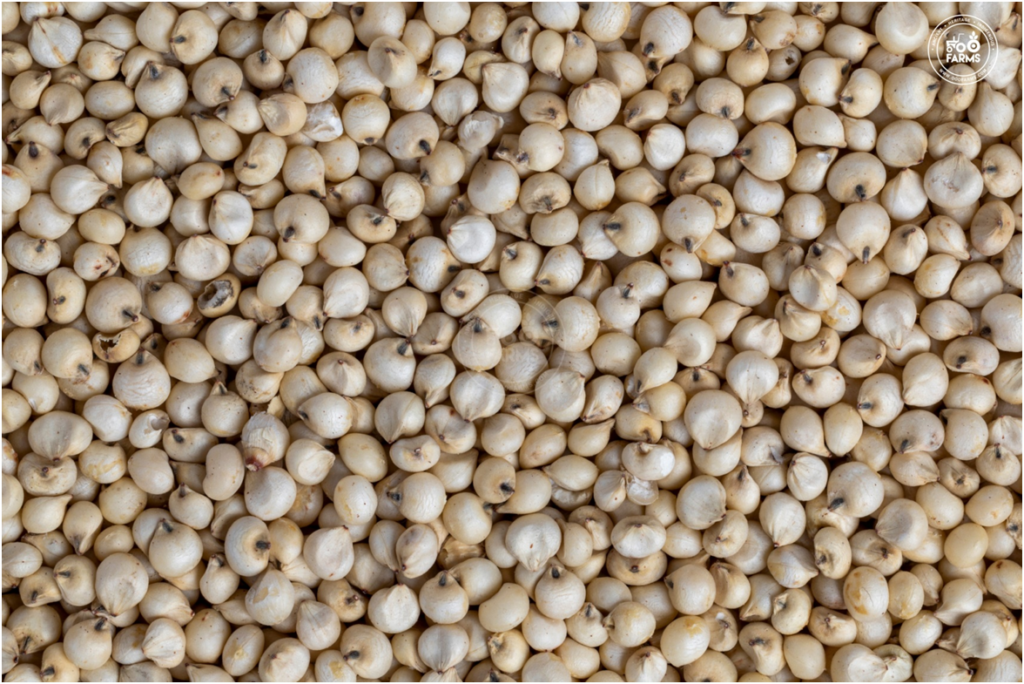
Nutrient Profile:
Sorghum, a versatile millet, is a good source of protein, dietary fiber, and essential minerals like phosphorus, potassium, and iron. It is gluten-free and offers a range of nutrients for overall health.
Health Benefits:
Heart Health: Sorghum’s high fiber content supports heart health by helping maintain healthy cholesterol levels.
Rich in Antioxidants: The presence of antioxidants contributes to combating oxidative stress in the body.
V. Barnyard Millet (Echinochloa colona):

Nutrient Profile:
Barnyard millet is a nutrient-dense option, providing a good amount of protein, dietary fiber, and essential minerals. It is low in fat and gluten-free, catering to various dietary needs.
Health Benefits:
Weight Management: The fiber content promotes a feeling of fullness, aiding in weight management.
Nutrient Diversity: Barnyard millet offers a diverse range of nutrients, contributing to overall nutritional balance.
VI. Little Millet (Panicum sumatrense):

Nutrient Profile:
Little millet is known for its high nutritional value, containing significant amounts of protein, dietary fiber, and essential minerals. It is low in fat and provides a gluten-free alternative.
Health Benefits:
Digestive Health: The dietary fiber supports digestive regularity and a healthy gut.
Nutrient Density: Little millet packs a nutritional punch, making it a valuable addition to a well-balanced diet.
The diverse world of millets offers a treasure trove of nutritional benefits, each variety contributing to the overall well-being of individuals. From the calcium-rich finger millet to the protein-packed pearl millet, incorporating these grains into the diet brings not only culinary diversity but also a spectrum of health advantages.
As modern lifestyles increasingly emphasize holistic well-being, millets stand as versatile, sustainable, and nutrient-dense options.
19. Millets and MNC FMCG Companies: A Global Perspective on Sustainable Nutrition
In recent years, the global food landscape has witnessed a paradigm shift as consumer preferences lean towards healthier and sustainable options. This has led to increased interest from Multinational Fast-Moving Consumer Goods (MNC FMCG) companies in incorporating millets into their product portfolios. This research post explores the intersection of millets and MNC FMCG companies, shedding light on the reasons behind this trend, the challenges faced, and the potential impact on global nutrition and sustainability.
Millets as Nutritional Powerhouses:
Rich Nutrient Profile:
Millets, encompassing diverse varieties such as finger millet, sorghum, and pearl millet, are celebrated for their rich nutrient profiles. They are excellent sources of fiber, protein, essential minerals, and vitamins, making them ideal for addressing nutritional deficiencies.
Gluten-Free and Sustainable:
Millets are inherently gluten-free, catering to the increasing demand for gluten-free alternatives. Moreover, they are sustainable crops, requiring less water compared to traditional grains like wheat and rice, aligning with the growing emphasis on eco-friendly food choices.
MNC FMCG Companies and Millet Integration:
Diversification of Product Portfolios:
MNC FMCG companies are diversifying their product portfolios to include millet-based offerings. This includes incorporating millet flours, snacks, and ready-to-eat products, responding to the rising consumer interest in healthier and more sustainable food options.
Alignment with Health and Wellness Trends:
The integration of millets aligns with the global health and wellness trends. Consumers are increasingly seeking nutrient-dense foods that contribute to overall well-being, and MNC FMCG companies recognize the potential of millets in meeting these demands.
Challenges in Millet Integration:
Consumer Awareness and Perception:
One of the primary challenges faced by MNC FMCG companies is creating awareness and altering consumer perceptions about millets. Educational campaigns and transparent communication about the nutritional benefits of millets are essential to overcome this hurdle.
Supply Chain and Infrastructure:
The global supply chain for millets may not be as established as that of traditional grains. MNCs need to invest in developing robust supply chains and infrastructure to ensure a steady and reliable supply of millet-based raw materials.
Global Initiatives and Collaborations:
Supporting Local Farmers:
MNC FMCG companies are increasingly engaging in initiatives that support local farmers in millet cultivation. This not only ensures a sustainable source of raw materials but also contributes to the economic well-being of farming communities.
Collaborations with Research Institutions:
Collaborations with research institutions are vital for enhancing the understanding of millet varieties, improving agricultural practices, and developing innovative millet-based products. Such partnerships contribute to the overall success of millet integration initiatives.
Case Studies: MNCs Championing Millet Integration:
Nestlé’s Millet Inclusions:
Nestlé, a global FMCG giant, has introduced millet-based products in various markets. From millet-based cereals to snacks, Nestlé is leveraging the nutritional benefits of millets to cater to health-conscious consumers.
General Mills and Millet Breakfast Cereals:
General Mills has embraced the millet trend by introducing breakfast cereals that incorporate millets. These offerings cater to consumers looking for diverse and nutritious breakfast options.
Future Outlook:
Rising Consumer Demand:
The global demand for healthier and sustainable food options is expected to rise further. MNC FMCG companies that successfully integrate millets into their product lines are likely to capitalize on this trend and gain a competitive edge.
Innovation in Millet Products:
Continued innovation in millet-based products, coupled with strategic marketing emphasizing health and sustainability, is crucial for the long-term success of millet integration by MNC FMCG companies.
The collaboration between millets and MNC FMCG companies marks a significant step towards promoting sustainable nutrition on a global scale. As consumer awareness grows, and MNCs continue to invest in research, supply chain development, and product innovation, millets are poised to become integral components of the global food industry.
This not only contributes to individual health but also aligns with the broader goals of environmental sustainability and supporting local agriculture. The journey of millets into the global FMCG market reflects a positive shift towards a more nutritious and sustainable future for the entire food industry.
20. Cold Pressed Oils vs. Refined Oils: Unveiling the Nutritional and Culinary Divide
The choice between cold-pressed oils and refined oils has become a focal point for health-conscious consumers and culinary enthusiasts alike. This comprehensive research post delves into the nuances of cold-pressed oils and refined oils, exploring their production processes, nutritional differences, and the impact on both health and culinary experiences.
Understanding Cold Pressed Oils:
Production Process:
Cold-pressed oils are extracted by mechanically pressing oilseeds or fruits without the use of heat. This method preserves the natural flavors, aromas, and nutritional components of the seeds or fruits.
Nutritional Value:
Cold-pressed oils retain a higher nutritional value compared to refined oils. They contain antioxidants, essential fatty acids, and other micronutrients that may be lost during the refining process.
Culinary Applications:
Cold-pressed oils, with their robust flavors and distinct characteristics, are often favored in culinary applications where the natural essence of the oil enhances the overall taste of the dish. They are commonly used in salad dressings, dips, and drizzling over finished dishes.
Decoding Refined Oils:
Production Process:
Refined oils undergo an extensive process that typically involves extraction with chemical solvents, heat, and further refining steps to eliminate impurities. This process results in oils with a milder taste and longer shelf life.
Nutritional Considerations:
While refining extends the shelf life of oils, it may strip away some of the natural nutrients and antioxidants present in the raw oilseeds or fruits. Refined oils often have a higher smoke point, making them suitable for high-temperature cooking methods.
Culinary Versatility:
Refined oils, with their neutral flavors and higher smoke points, are preferred for various culinary applications, including frying, baking, and sautéing. They are chosen for their ability to withstand higher temperatures without imparting strong flavors to the food.
Health Implications:
Heart Health:
Cold-pressed oils, particularly those high in monounsaturated and polyunsaturated fats, are associated with potential heart health benefits. These oils may contribute to improving cholesterol levels and overall cardiovascular health.
Processed Oil Concerns:
Refined oils, due to the processing methods involved, may lose some of the health-promoting compounds present in the raw materials. Additionally, the use of chemical solvents in extraction raises concerns among health-conscious consumers.
Culinary Considerations:
Flavor and Aroma:
Cold-pressed oils are celebrated for their distinct and robust flavors, which can add depth to dishes. Refined oils, being more neutral, are prized for their ability to let the natural flavors of the ingredients shine through.
Cooking Techniques:
The choice between cold-pressed and refined oils often depends on the cooking technique. Cold-pressed oils are preferred for low-heat cooking or as finishing oils, while refined oils are suitable for high-heat cooking methods like frying and deep-frying.
Popular Cold Pressed Oils and Refined Oils:
Cold Pressed Oils:
Extra Virgin Olive Oil: Known for its fruity and peppery flavor, it is a staple in Mediterranean cuisine.
Cold Pressed Coconut Oil: With its distinct coconut aroma, it is a favorite in both cooking and skincare.
Cold Pressed Avocado Oil: Rich in monounsaturated fats, it has a mild, buttery flavor.
Refined Oils:
Refined Sunflower Oil: A neutral oil with a high smoke point, ideal for frying and baking.
Refined Canola Oil: Known for its mild taste and versatility in various cooking methods.
Refined Soybean Oil: Widely used for its neutral flavor and high smoke point.
Sustainability and Environmental Impact:
Cold Pressed Oils:
Cold-pressed oils, produced using mechanical methods, generally have a lower environmental impact as they involve fewer chemical processes.
Refined Oils:
The refining process of oils may involve chemical solvents and additional steps, potentially contributing to a higher environmental footprint.
The choice between cold-pressed oils and refined oils is a nuanced decision that involves considerations of flavor, nutritional content, and culinary applications.
While cold-pressed oils are celebrated for their robust flavors and potential health benefits, refined oils offer versatility in high-heat cooking.
Ultimately, the ideal choice depends on individual preferences, culinary needs, and the desired nutritional profile.
21. Millets and the Western World: Introduction
The Western world is experiencing a culinary and nutritional renaissance, and at the heart of this transformation lies the humble millet. Once relegated to the sidelines, millets are now making their mark on Western tables, elevating not only the culinary landscape but also contributing to a paradigm shift in dietary preferences.
The Rise of Millets in Western Diets:
Nutritional Density:
Millets, encompassing varieties such as quinoa, amaranth, and fonio, are celebrated for their nutritional density. Packed with protein, fiber, vitamins, and minerals, millets offer a wholesome alternative to traditional grains.
Gluten-Free Appeal:
With an increasing awareness of gluten sensitivities and the popularity of gluten-free diets, millets stand out as a naturally gluten-free option, catering to the needs of a broader consumer base.
Millets as Culinary Trendsetters:
Diverse Culinary Applications:
Millets are versatile ingredients that lend themselves to a myriad of culinary creations. From millet-based flours in baking to millet grains in salads and bowls, the culinary possibilities are vast, contributing to a diverse and dynamic Western gastronomy.
Fine Dining Incorporation:
Renowned chefs and restaurants are embracing millets, incorporating them into gourmet dishes. Millets add not only a nutritional dimension but also a unique texture and flavor profile, appealing to the discerning palates of modern consumers.
Nutritional and Health Benefits:
Heart-Healthy Millets:
Millets, particularly those high in soluble fiber, contribute to heart health by helping to lower cholesterol levels, a critical consideration in the Western world’s fight against cardiovascular diseases.
Weight Management Support:
The fiber and protein content in millets promote satiety, aiding in weight management—a significant concern in Western societies grappling with obesity and related health issues.
Millets and Sustainability:
Millets are inherently eco-friendly crops, requiring less water and resources compared to water-intensive grains. As the Western world increasingly values sustainable and ethical food choices, millets align with these principles.
Climate-Resilient Agriculture:
The cultivation of millets is more adaptable to diverse climates, making them resilient in the face of changing weather patterns—a crucial factor as the Western world grapples with the impact of climate change on agriculture.
Millets on the Shelves: Market Trends and Consumer Preferences:
Supermarket Aisles:
Millets are finding their way onto supermarket shelves in various forms—flours, grains, snacks, and even millet-based ready-to-eat meals. This reflects the growing consumer interest and the demand for diverse, nutritious options.
Consumer Education Initiatives:
As millets gain popularity, educational initiatives are crucial in informing consumers about their benefits. This includes cooking demonstrations, nutritional workshops, and marketing campaigns to demystify millets and encourage their incorporation into daily diets.
Challenges and Opportunities:
Overcoming Perceptions:
The challenge lies in overcoming preconceived notions about millets and introducing them as not just alternatives but as culinary delights. Strategic marketing and educational campaigns play a vital role in reshaping perceptions.
Diversifying Millet Products:
To further integrate millets into Western diets, there is an opportunity for the development of a wide range of millet-based products that cater to diverse tastes and preferences.
Future Outlook:
Culinary Innovation Continues:
The future holds exciting possibilities as culinary innovation with millets continues. Chefs and food innovators will likely explore new ways to incorporate millets into Western dishes, pushing the boundaries of gastronomic creativity.
Nutritional Awareness Grows:
As nutritional awareness continues to rise in the Western world, millets are poised to become a staple in health-conscious households, contributing to a more diversified and balanced diet.
Millets are making a significant impact on the Western world, not just as a nutritional powerhouse but as a symbol of culinary diversity and sustainability.
As the journey of millets into Western diets unfolds, it promises a healthier, more sustainable, and culturally rich food future for the Western world.
22. Millets and Indian culinary Experience The Culinary Delight
Millets, the ancient grains that have been a staple in Indian agriculture for centuries, are regaining prominence in modern times owing to their nutritional benefits and versatility in the kitchen. In this comprehensive research post, we delve into the intricate relationship between millets and the vibrant tapestry of Indian culinary experiences. From their historical significance to their modern-day applications, we explore the multifaceted role millets play in shaping India’s diverse and flavorful cuisine.
Historical Roots of Millets in Indian Cuisine
Millets have deep roots in Indian agriculture, dating back to ancient times. Tracing their origins to the Harappan civilization, millets have been integral to the Indian agrarian landscape. The historical significance of millets is not only in their cultivation but also in their incorporation into traditional recipes, offering sustenance and nutrition to generations.
Nutritional Prowess of Millets
Millets are a nutritional powerhouse, offering a rich source of essential nutrients. From protein and fiber to vitamins and minerals, millets contribute significantly to a well-rounded and healthy diet. This section provides an in-depth exploration of the nutritional benefits of millets, emphasizing their role in addressing contemporary health concerns and dietary preferences.
Millets in Regional Cuisines
Indian cuisine is a mosaic of diverse regional flavors, each with its unique culinary identity. Millets, owing to their adaptability, have found a place in the kitchens across the country. This section explores the different ways millets are used in regional dishes, showcasing the variety and ingenuity of Indian cooks in incorporating these grains into their culinary creations.
Millets and Modern Culinary Trends
In recent years, there has been a resurgence of interest in traditional and ancient grains, aligning with the global movement towards healthier and sustainable eating. Millets, with their low environmental impact and nutritional benefits, have become a focal point in the discussion on modern culinary trends. This section explores the contemporary applications of millets in innovative recipes, catering to the evolving tastes and preferences of a health-conscious audience.
Millets as a Culinary Experience
Beyond their nutritional content and historical significance, millets contribute to the overall culinary experience in unique ways. From enhancing the texture of dishes to imparting a distinct flavor profile, millets add depth and character to Indian cuisine. This section explores the sensory aspects of incorporating millets into everyday meals, offering a holistic perspective on the culinary journey with these ancient grains.
The exploration of millets in the context of Indian culinary experiences unveils a rich tapestry of tradition, nutrition, and innovation.
As we rediscover the potential of these ancient grains, we not only reconnect with our historical roots but also pave the way for a healthier and more sustainable future in the realm of Indian cuisine.
The journey with millets is a culinary adventure that transcends time, bringing together the past and the present on the plates of those who savor the diverse flavors of India.

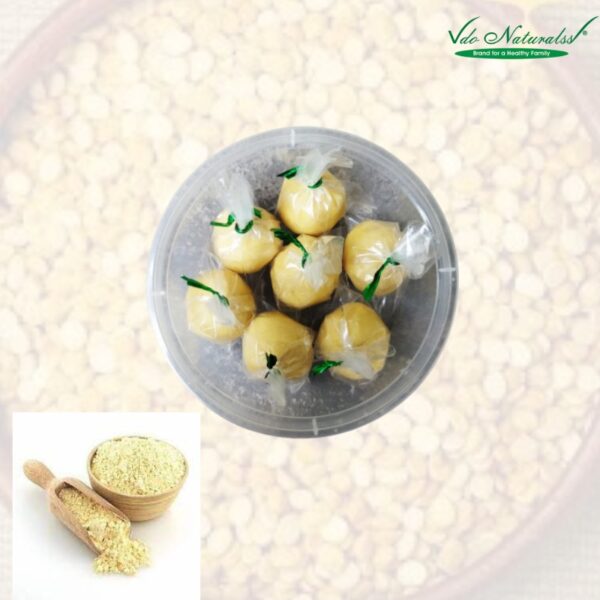 Chettinad Snacks
Chettinad Snacks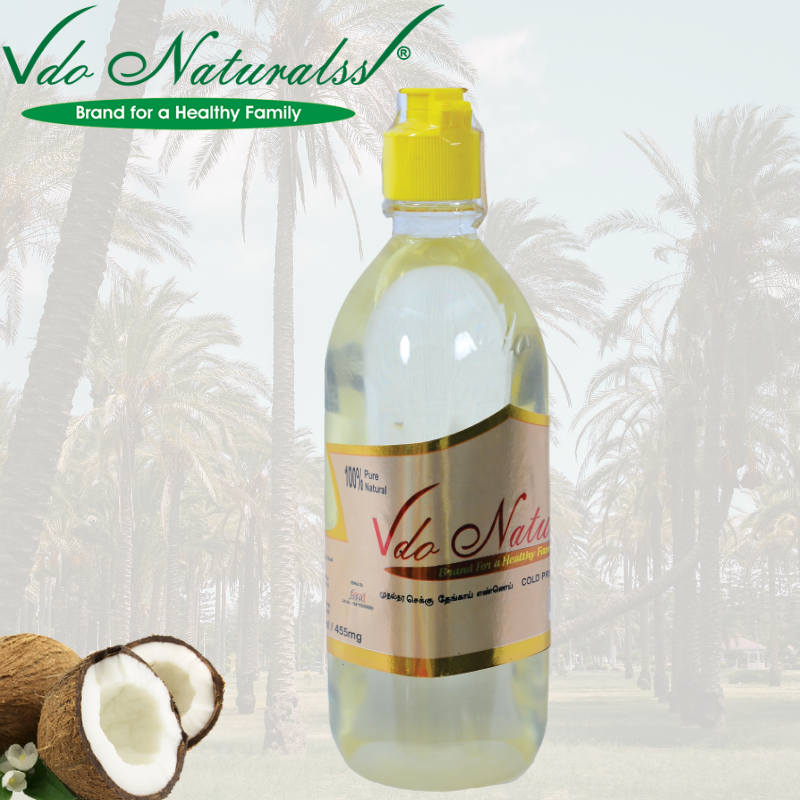 Coconut Oil
Coconut Oil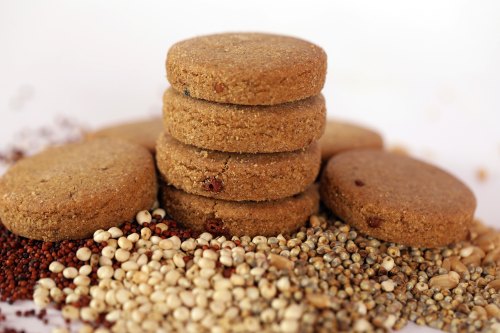 Cookies
Cookies General
General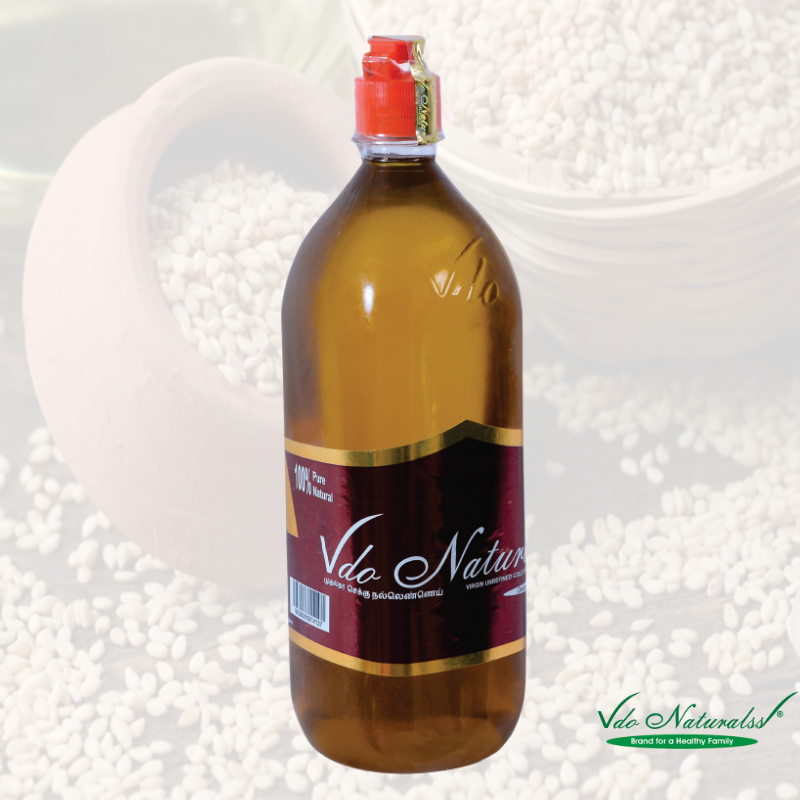 Gingelly Oil
Gingelly Oil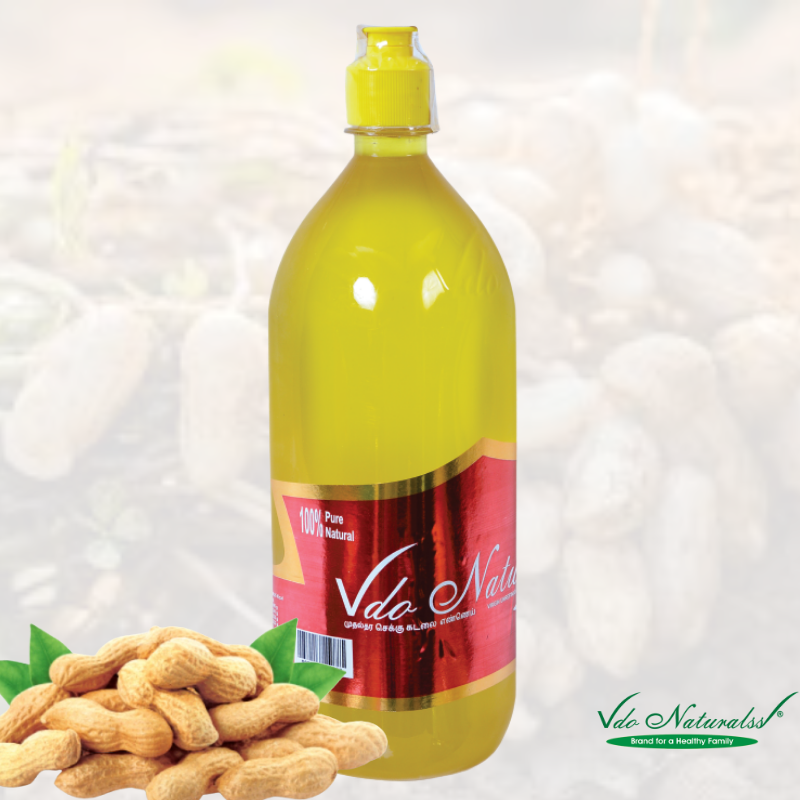 Groundnut Oil
Groundnut Oil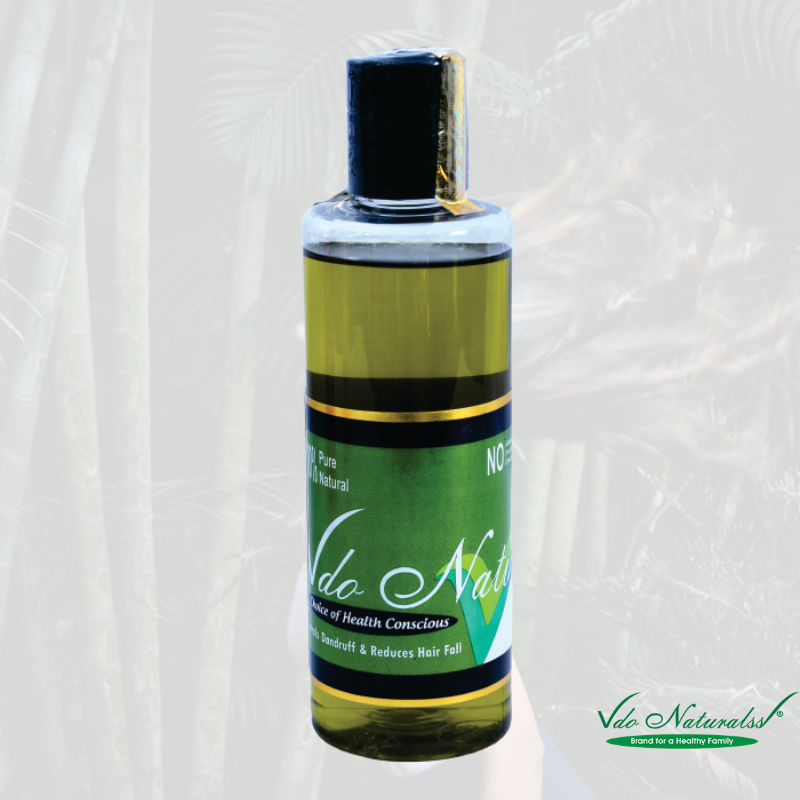 Herbal
Herbal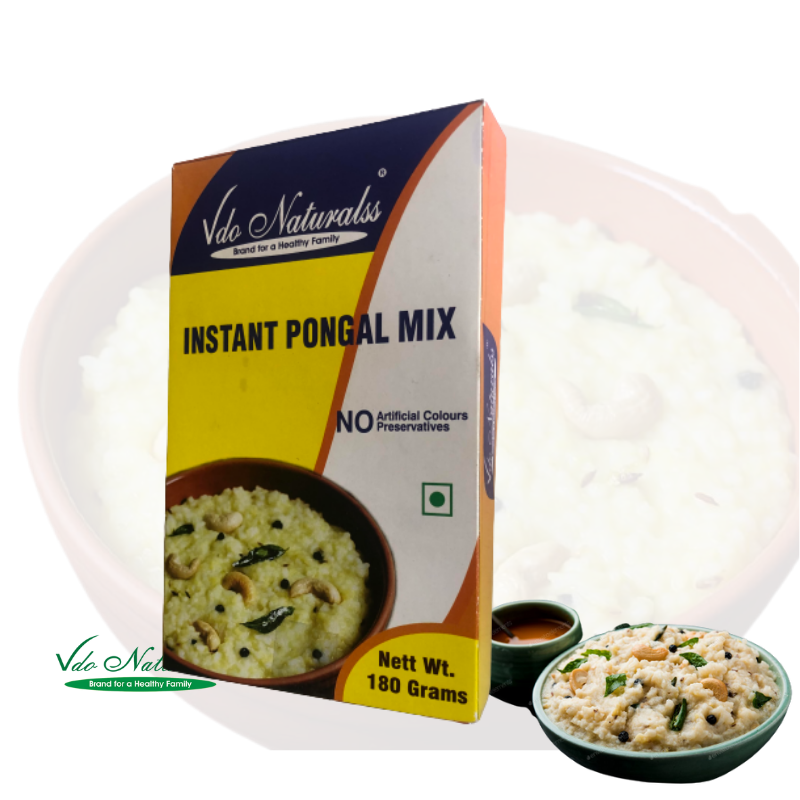 Instant Mix
Instant Mix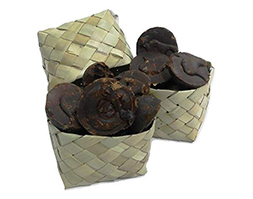 Karuppatti
Karuppatti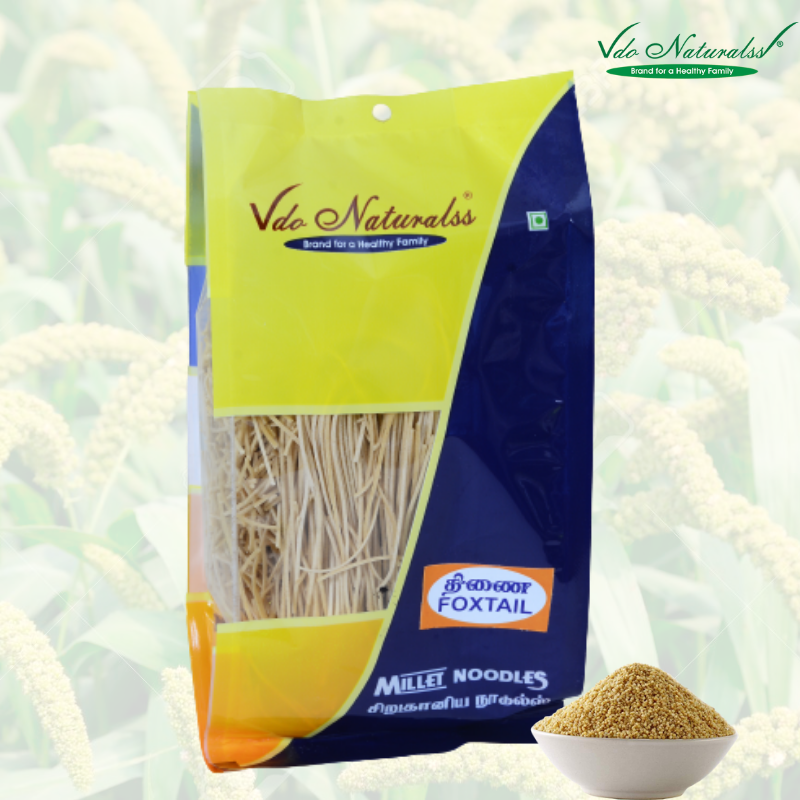 Noodles
Noodles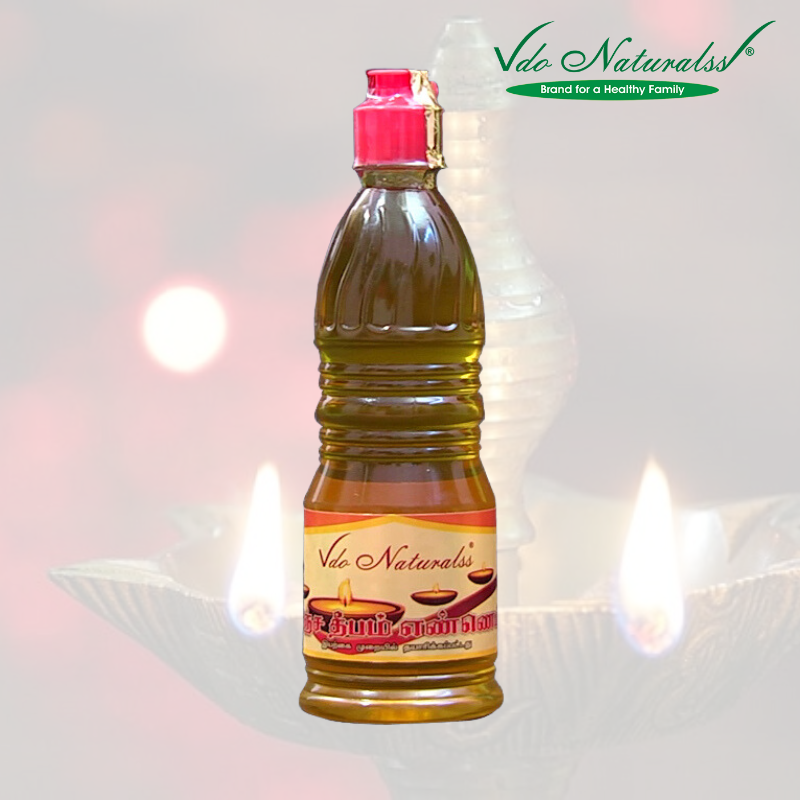 Panchadeepam Oil
Panchadeepam Oil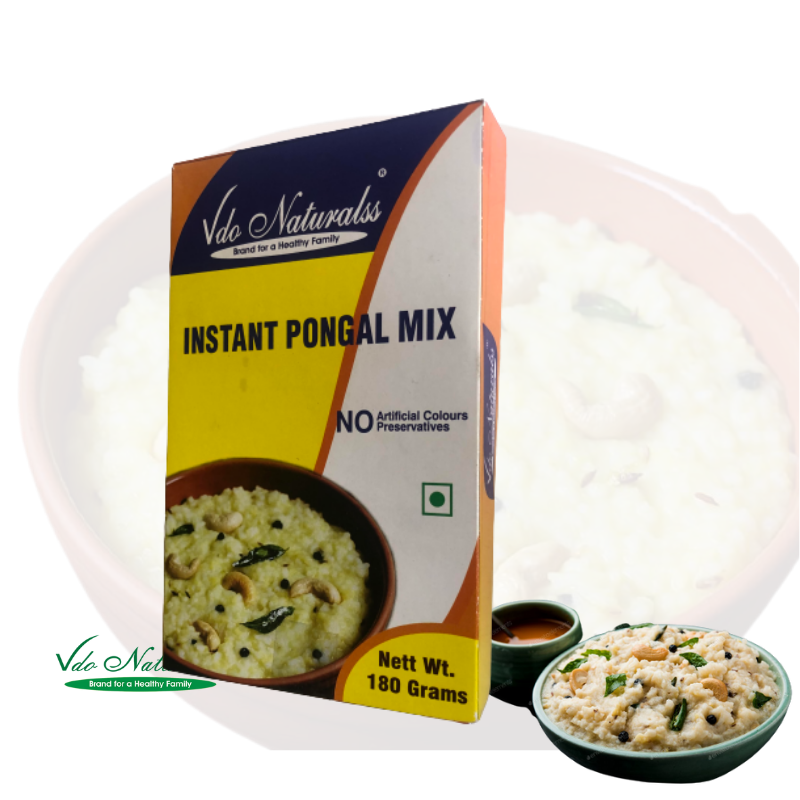 Pongal Mixes
Pongal Mixes